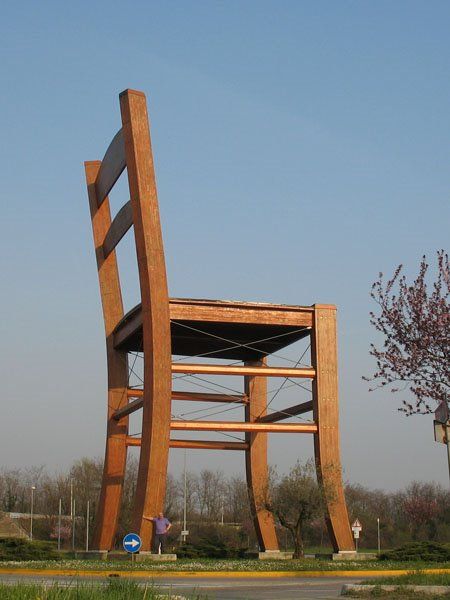The Italian Chair District: a story within a story
The expression “Italian Chair District” originally defined a limited area situated in the region Friuli, an area which has later on expanded its boundaries thanks to a few big companies and thanks to a lot of micro sized companies (family businesses) dedicated to the chair production. These small yet highly flexible companies, have grown up thanks to their
cooperation with prestigious architects and designers, which led to the production of chairs appreciated and exported worldwide.
As simple as a chair
The chair originates as a simple, daily product and its story reflects these humble origins and its huge development also on the design point of view. Exactly because its functionality hasn’t changed, the invention and the designing phase of the chair have interlaced themselves with the serial production with relevant shapes, the design. The chair made in Friuli, historically characterized by essential lines and mastery in the manufacturing, was a popular product, with a simple appearance: a wooden structure and a woven seat.
Wood and straw
The manufacture of wood and straw was a family activity, which was carried out at home and involved both men and women. The chair makers – called “cjadreârs” in Friulian – used wood in order to build strong frames, while women weaved together elements found in nature in order to create the seats. The industrial activities of the Chair district originated from this type of production, which started a long time ago due to necessity.
This system adapted to the agricultural society and had an impact on the future Friulian companies, small family businesses. The economy of the “Triangle of the chair” originated in the 19th Century in the area of Manzano, San Giovanni al Natisone and Corno di Rosazzo and later on extended its boundaries to the neighbouring municipalities until it became a socioeconomic entity, a localized production system, with a clearly defined expression
known worldwide.
The strategic design made in Italy
This segment of the region Friuli has produced 30% of the chairs diffused worldwide (source “Distretto della sedia: design tra passato e futuro” – The Chair district: design between past and future – by Anna A. Lombardi but only once the productive system has showed its weaknesses, the importance of design has come out: the design is conceived as a distinctive element for a product, that otherwise can be produced wherever else in the world at a lower price. Less is more: less chairs but more expensive. The immaterial value which could move the price of this product is creativeness, one of the distinctive features of Italians, supported by the experience they have got in years of work. The real strength of the Made in Italy.
The new project of the chairs glocal (global+local): after the crises comes the rebirth
Even if the tangible symbol of the Chair district, sedia da Guinness that enthroned at the entrance of the town of Manzano, has fallen down after 20 years, the Friulians have rolled up their sleeves. A new cluster, called sistema Casa offers Manzano’s productive pole a network of 600 active companies that are specialized in the production of chairs in wood, upholstered, country-style, classic, modern or design chairs and offers as well a support for the growth and the consolidation of the productive context. These companies compete from the quality point of view on a global scale. On the spaceline we can find local companies and world markets. On the timeline, traditional and technological expertise meet up.
The chair from A to C
The future starts from a present which is able to recover its founding values and which can collect the Global economy challenges. Environment, cooperation, communication, certifications: these are the starting points for the development of the modern chair’s production. The respect for the environment is crucial in each production process. The cooperation between different companies situated in the same territory is a competitive advantage that cannot be ignored. The communication is a need and at the same time an opportunity to be taken. The certifications are the evidence of the research, of the development and of the quality. These aspects trace the path of the companies that are now pointing at a real relaunch after resisting during the toughest years. The goal is the total quality, which places the customer in the very center of the process.





